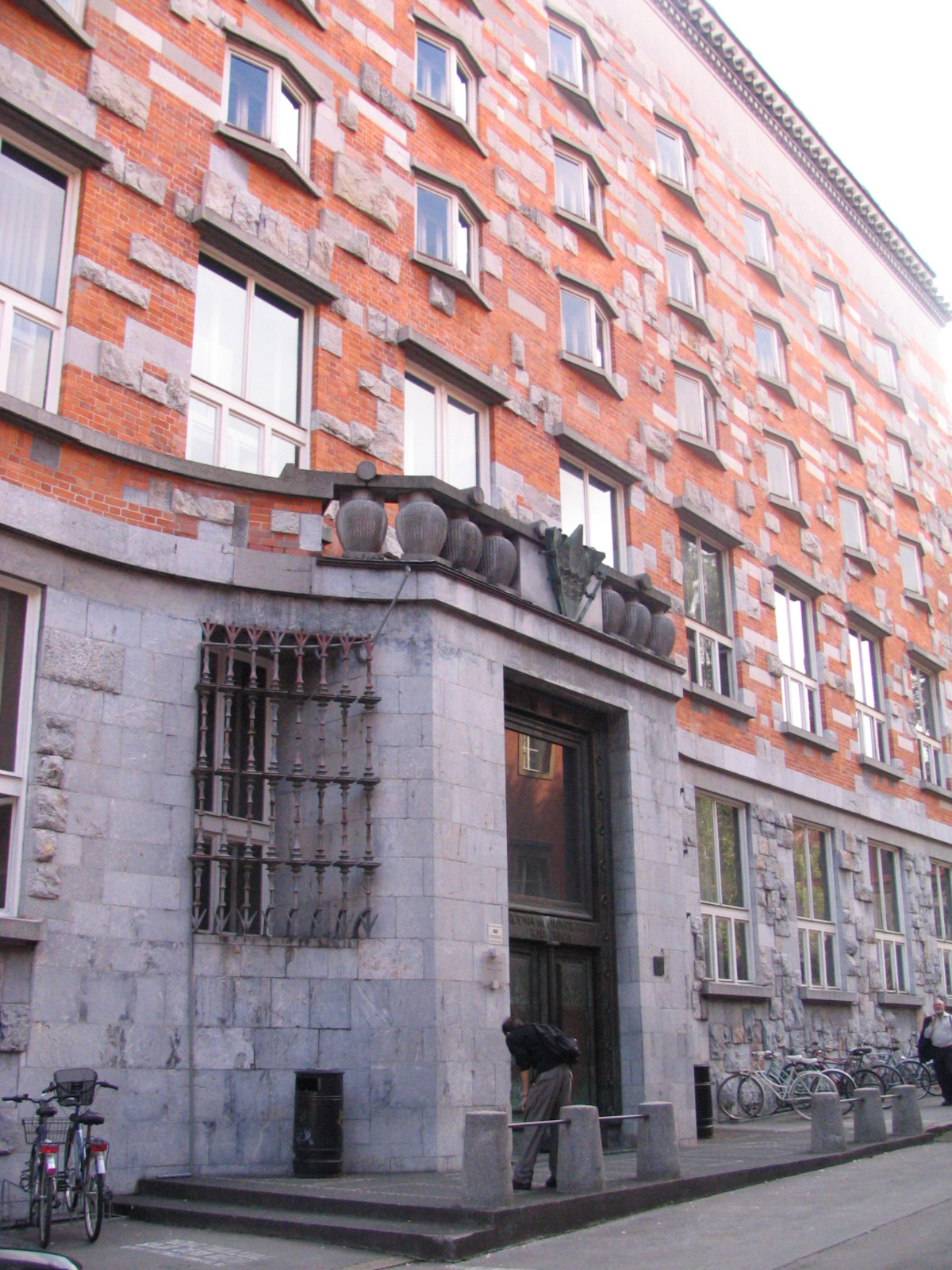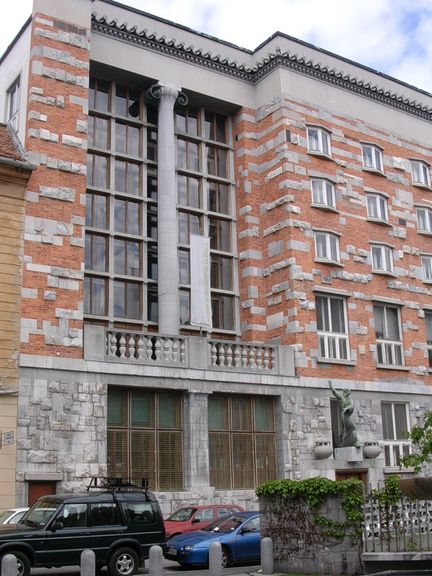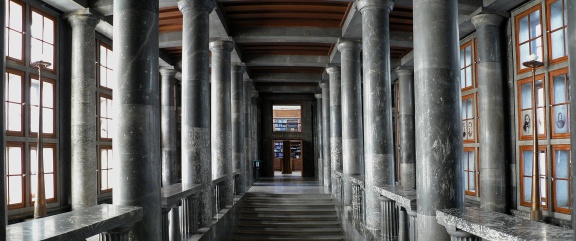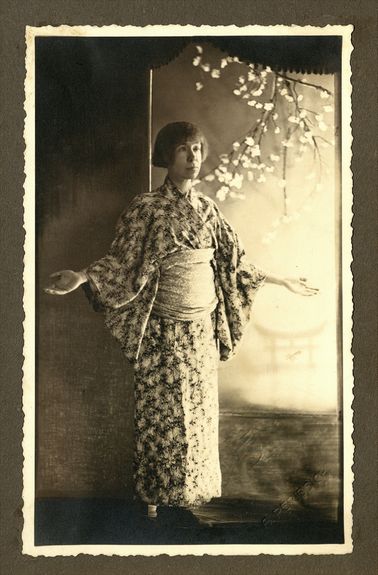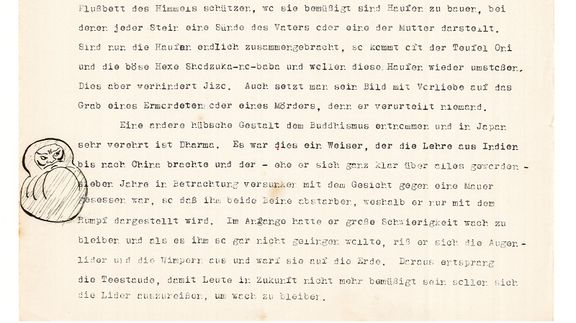National and University Library
-
to
14 Sep 2023
25 Nov 2023
An exhibition of manuscripts and first editions of Slovenian Romantic poet France Prešeren and a poetess Luiza Pesjak, curated by Prof. Dr. Igor Grdina and Prof. Dr.Urška Perenič. Supported by Deutsches Romantik-Museum, National and University Library (NUK) and SKICA Berlin, Slovenian Cultural Centre, Embassy of the Republic of Slovenia Berlin.
at the Frankfurt Book Fair
-
to
31 May 2019
23 Jul 2019
Plečnik on Brioni exhibition produced by Plečnik House (Museum and Galleries of Ljubljana) and the National and University Library in Ljubljana, supported by the Embassy of the Republic of Slovenia Zagreb
-
to
5 Mar 2018
19 Mar 2018
Exhibition of books by Zofka Kveder, co-organised by the National and University Library and the Embassy of the Republic of Slovenia Zagreb,
-
7 Feb 2018
The exhibition To the Promised Land: Slovenian Women in America, provided by the National and University Library,
-
6 Nov 2017
Days of Slovenian Literature with Stanka Hrastelj, Jurij Hudolin and Ivo Svetina Slovene Writers’ Association, initiated by National and University Library and supported by the Embassy of the Republic of Slovenia Skopje,
History
The National and University Library (NUK) originated in 1774 with a decree of Empress Maria Theresa. Around 637 books which had escaped a fire in the previously-dissolved Jesuit college in Ljubljana were henceforth made available for public use in the newly-established library of Ljubljana Lyceum (High School). The Lyceum Library was legally entitled to receive copies of legal documents from the province of Carniola as early as 1807, and during the French occupation its legal deposit status was extended to all of the Illyrian provinces. After the abolition of the Lyceum in 1850 the library became the main reference library for Carniola.
Immediately after World War I, in 1919, the Lyceum Library was renamed the State Reference Library, thus becoming the central library of Slovenia with the right to receive mandatory deposit copies from that area. In 1921 it became the State Library and legal documents from all the regions of former Yugoslavia started to pour in. With the founding in that same year of the University of Ljubljana, the library also began to serve as the central university library. However, as it had to operate provisionally within the limited confines of an adapted area of the old Lyceum in Poljane Street, as a university city Ljubljana could only offer 18 seats for readers in its university library.
In 1938 the library was renamed the University Library in accordance with the regulations of both the University Act and the General University Decree. By this time construction of a new University Library building was already under way. The designs by architect Jože Plečnik had initially encountered resistance from the Belgrade authorities, but after persistent student protests and demonstrations they were approved, with construction work taking place between 1935 and 1940, and the opening in 1941. After the liberation in 1945 the University Library was legally recognised as the Slovene national library and renamed the National and University Library (NUK).
Services
The main tasks of NUK are collecting and preserving the national collection (Slovenika), enabling access to its collection, co-creating the supra-national virtual world library (E-library), providing expert support to the national library system, and developing its functions as a central library of the University of Ljubljana.
It has many special collections (for example, the NUK Music Collection, the NUK Manuscript Collection and Early Printed Collection, the Cartography Collection, the AV Material Collection and the Pictorial Collection).
In addition to NUK’s 9 departments, Slovenia's ISBN-, ISMN- and ISSN-issuing agencies are also located here, along with the National Centre for Library Development, the National Book Preservation and Restoration Centre, the National Bibliographic Agency, the Educational and Training Centre and the Research and Development Department. Library activities all over the country are organised within the framework of the National Centre for the Development of Libraries. It assesses and directs activities through statistical information acquired from libraries, and prepares drafts and proposals of library standards, laws, acts, and regulations, mainly for the use of the Ministry of Culture.
At the end of 2001 the NUK collection comprised 2,321,464 items, including 1,110,400 monograph volumes, 301,000 serial publications (around 1,000 international titles), 166,100 pictorial items, 544,126 small print items, around 5,000 manuscripts and over 12,000 standards. NUK acquires about 400,000 new items each year.
Automatisation has taken place since 1988. NUK offers a computer room with 19 computers, a lecture room and an Info Centre with 18 computers.
Digital Library of Slovenia
Since 2006 NUK has been developing the DLib.si - Digital Library of Slovenia, a web portal providing ready access to the digital items such as journals, books, manuscripts, maps, photographs, music and reference material. All the collections are freely accessible. Recent additions include the digitalised former Ljubljana municipality's newsletters (from the early sixties to Slovenia's independence), Zbor občanov [The citizens' meeting] and the journal Ženski svet [Women's world], published between the two world wars first in Trieste and then in Ljubljana, which fought against poverty, de-nationalisation and assimilation.
Exhibition projects
NUK organises a range of documentary exhibitions every year, based on its archives and collections. The exhibitions celebrate various anniversaries of the renowned historical or contemporary personalities (Svet… Svet… Svetlana on the 70th anniversary of the birth of poet Svetlana Makarovič) or highlight a specific topic (for example, on relations between the Czechs and Slovenes or the Ideology of Nation in the Graphic Design of Personal Documents). The library also hosts some touring exhibitions (for example, Hans Christian Andersen, Odense).
NUK also collaborates with other organisers and lends the material for displays (for example, May '68 in Paris and the Student Movement in Ljubljana, 1968–1972 in the International Centre of Graphic Arts).
Educational projects
NUK also offers in-service training programmes in librarianship for those members of the staff who have graduated from other faculties and have worked in a library for at least a year.
International cooperation
NUK is experienced in international co-operation activity, attending and contributing to international conferences, participating in various international boards and collaborating in various international projects. It conducts inter-library lending with partners such as BL DSC (ARTEmail), DBI-Link, Subito, OCLC (Prism), CNRS (INIST) and Proquest (PhD, MA theses) and exchanges with the EU, UNESCO and the UN. Co-operation has been particularly active with Czech and Danish national libraries. NUK librarians have held internships at the University of Wisconsin, USA; the City University of London; and the University of Illinois, USA; while librarians from Russia, Albania, Croatia, Bosnia and Herzegovina, Serbia and Montenegro have conducted internships at NUK.
EU projects
NUK is involved in EU projects such as TEL, PAPYLUM, EURECA and LEAF, and in some Central and Eastern European projects concerned with cataloguing, performance evaluation and the preparation of a multilingual dictionary of library terms (5,500 entries in 16 European languages). In 2001 NUK organised the first TEL European Library Seminar and the IFLA Seminar on Interlibrary Loans and Document Supply, which involved 150 experts from 33 countries. NUK is a member of IFLA, LIBER, FID, ALA, ELAG, ASIS, IAML, ISSN, ISBN, ISN, OCLC, the Conference of European National Librarians (CENL) and the European Commission on Preservation and Access (ECPA). Co-operation with the British Library and the Library Association in the United Kingdom is currently being developed.
Most of the NUK's efforts are related to the process of digitalisation. NUK is the national representative in the Europeana (European digital library network) project, and has engaged in partnerships such as the eBooks on Demand (EOD): a European digitization service, funded through the Digitization on Demand project by European Union (2006–2008) and the EU Culture programme (2009–2013).
Slovene Reading Room in Germany
In 2009 a Slovene Reading Room (Der Slowenische Lesesaal) was established in Wissenschaftszentrum Ost- und Südosteuropa in Regensburg. It is based on the collaboration among the National and University Library (NUK) from Ljubljana, the University Library in Regensburg and the Südost-Institut. The Reading Room is a unique mediator for the Slovene culture in Germany.
See also
- DLib.si - Digital Library of Slovenia
- NUK Music Collection
- NUK Manuscript Collection and Early Printed Collection
External links
- National and University Library website (in Slovenian and English)
- NUK in the European Library Newsletter, Sept/Oct 2008 (in English)
- Der Slowenische Lesesaal in Regensburg web pages (in German)
- Presentation of the eBooks on Demand European project on the Cultural Contact Point Slovenia website (in English)
- Information about a new international architectural competition for the new National and University Library (NUK II)
Gallery
- Museums
- Monuments and sites
- Museum collections
- Collections
- Literature
- Libraries
- Library institutions
- National libraries
- Library education
- Support services
- Venues
- Exhibition venues
- Exhibition organisers
- Archives
- Archival institutions
- Archives publishers
- Library support services
- EU funding of Slovene organisations (Culture and MEDIA Programmes)
- EU Culture funding recipient



